Think about strolling into an unfamiliar surroundings and having the ability to instantly assess its security, potential threats, and alternatives for escape or benefit. This ability isn’t just reserved for skilled professionals like army personnel or legislation enforcement. Civilians can develop the identical capability to learn locations and conditions by understanding how our sensory programs, cognitive processes, and situational consciousness work. Armed with these understandings, we are able to make higher choices and keep one step forward of potential risks.
You might be navigating a crowded metropolis road, exploring a distant climbing path, or just assessing the ambiance at a social gathering. Being able to “learn the room” can present a big benefit. Growing this ability enhances private security and builds confidence in dealing with unpredictable conditions. By turning into extra attuned to environmental cues and patterns, you’ll be able to rework strange observations into actionable insights, empowering you to behave decisively and successfully in any setting.
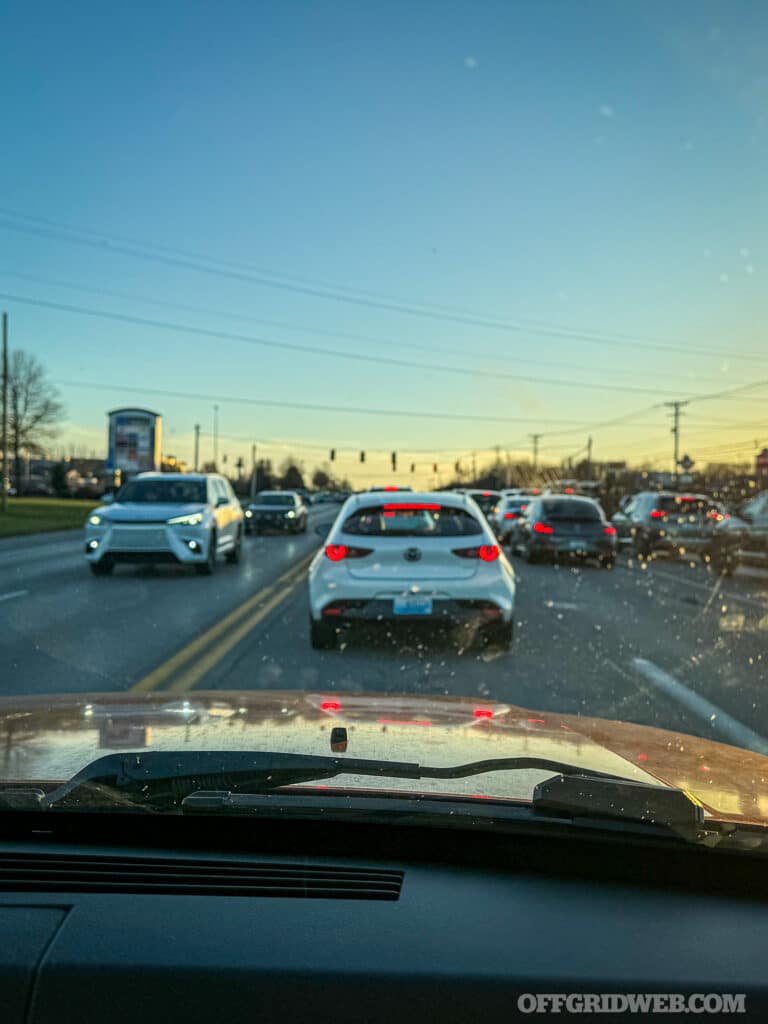
Keep house between your car and others at stoplights, guaranteeing an escape route. Place your self in outer lanes at any time when potential for simpler exits.
Foundations of Situational Consciousness
Situational consciousness is the cornerstone of successfully studying locations. It includes observing and understanding your surroundings to anticipate what would possibly occur subsequent. This proactive capability can assist you make knowledgeable choices and reply appropriately to dynamic circumstances, growing your security and confidence. This ability will be damaged down into three ranges:
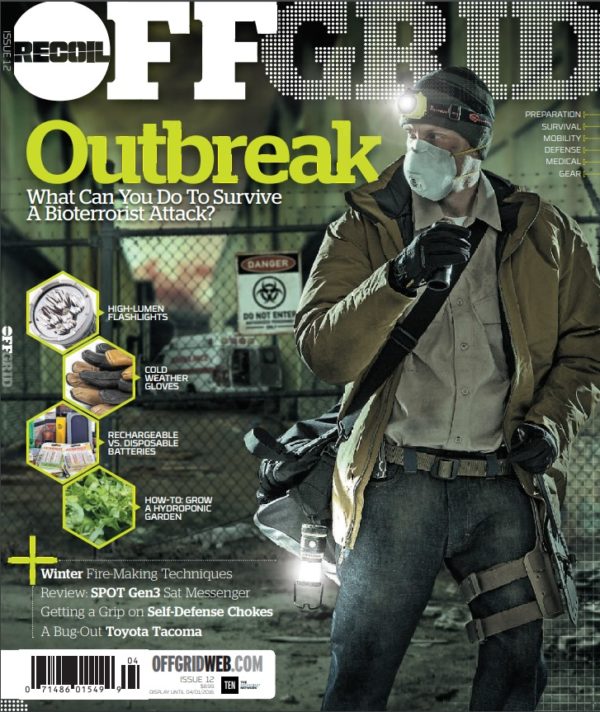
Subscribe Immediately and Save!
Stage 1 – Notion: Observing and recognizing situational components, akin to folks, objects, and environmental elements. By paying shut consideration to those components, you’ll be able to construct an correct image of your environment and their present state. The notion degree is the inspiration of growing situational consciousness.
Stage 2 – Comprehension: Deciphering and evaluating what these observations imply. Understanding the importance of what you understand lets you establish potential patterns and anomalies that would point out security or hazard. This degree connects what you see to actionable which means, permitting you to chart a decisive plan of action.
Stage 3 – Projection: Anticipating future occasions based mostly in your understanding of the present scenario. Projecting outcomes helps you to plan actions that mitigate dangers or capitalize on alternatives. This forward-thinking strategy helps keep away from reactive selections and fosters proactive conduct.
Attaining situational consciousness begins with a agency grasp of how our sensory programs collect info and the way our mind processes it. Common apply and aware remark can refine these abilities, permitting you to reply successfully in each routine and high-pressure conditions.
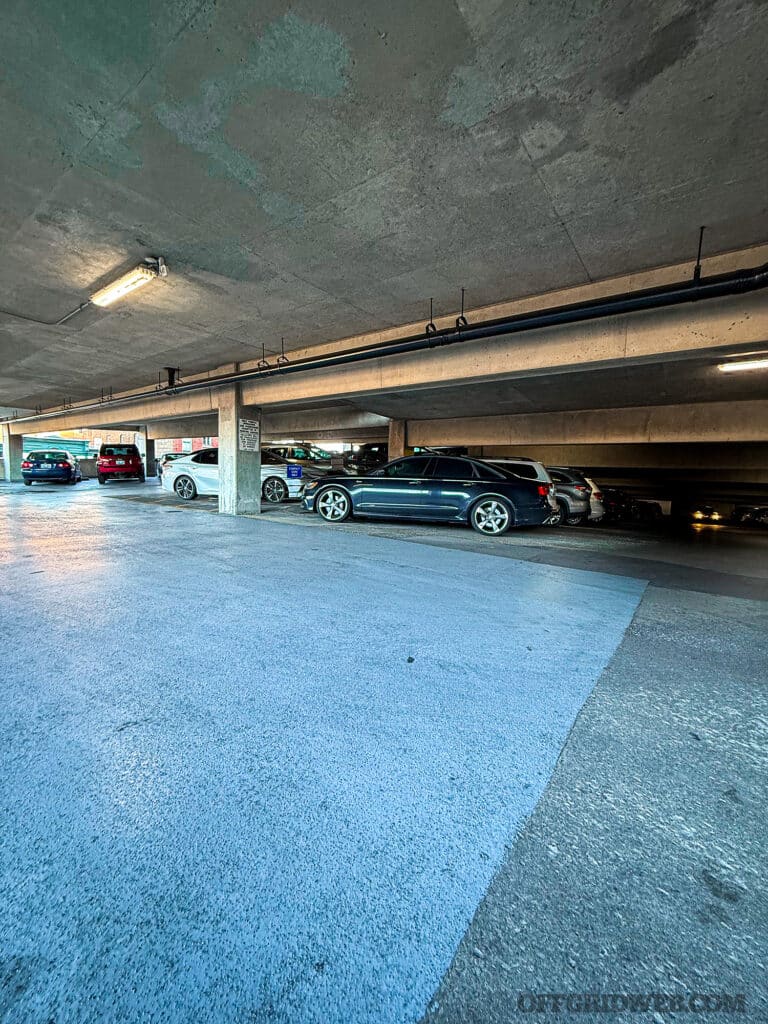
Parking garages typically comprise contrasting mild and darkish areas. The quantity of sunshine current determines how a lot you’ll be able to see and what could stay hidden.
How Our Mind and Eyes Work Collectively
The mind and eyes work in live performance to look at and interpret our environment. Here is a simplified mannequin:
Sensory Enter: Your eyes detect stimuli like motion, colours, and shapes. This uncooked information enters sensory reminiscence, the place it’s held briefly earlier than shifting to working reminiscence if deemed obligatory. Taking note of delicate modifications in these stimuli can considerably improve your capability to note essential particulars.
Working Reminiscence: This limited-capacity system processes info in actual time. To keep away from overloading it, give attention to essentially the most related stimuli in your surroundings. Strategies like “chunking” info or associating it with acquainted patterns can enhance working reminiscence effectivity.
Lengthy-Time period Reminiscence: When working reminiscence efficiently integrates new information with preexisting information, it’s saved in long-term reminiscence for future reference. Usually revisiting and rehearsing this saved info strengthens retrieval and aids faster decision-making in related conditions.
The extra acquainted you’re with a spot or scenario, the extra your mind depends on top-down processing — drawing on previous experiences to rapidly assess the scene. Novices, nonetheless, rely extra on bottom-up processing, analyzing options like movement or coloration with out prior context.
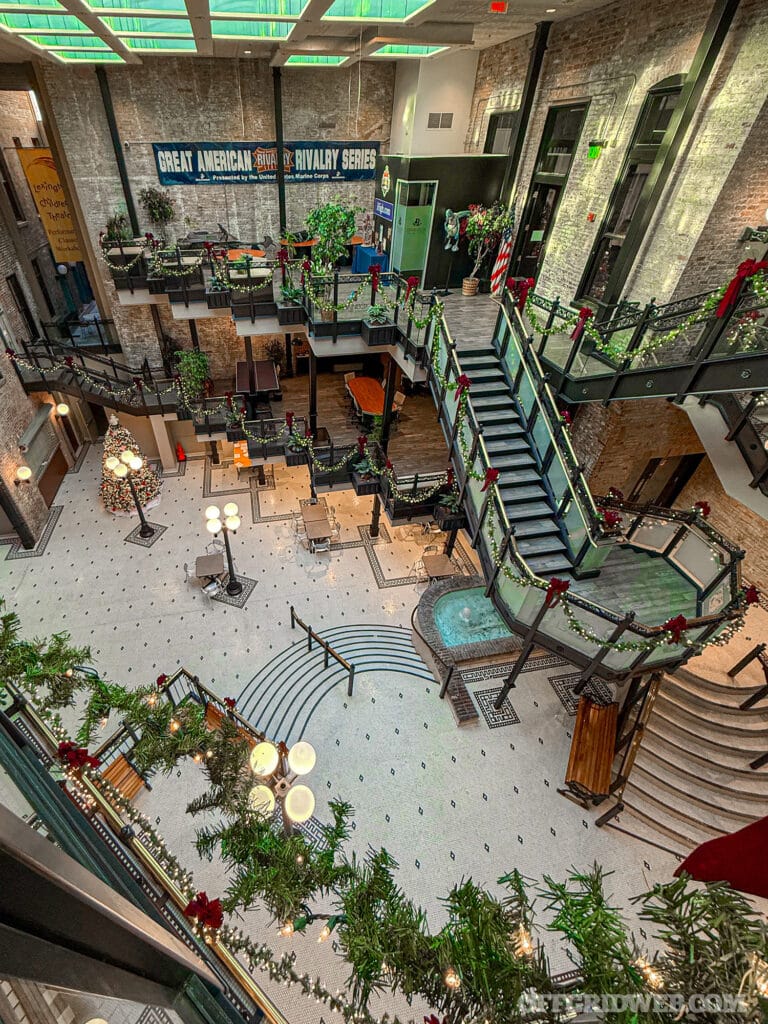
Take observe when an space that’s normally bustling with exercise all of a sudden turns into empty and inactive — it might point out a possible shift in circumstances.
Geographics, Atmospherics, and Area Consciousness
To successfully learn locations, understanding the ideas of geographics, atmospherics, and house consciousness is essential. These ideas kind the spine of situational consciousness, enabling you to make knowledgeable choices and keep forward of potential risks.
Geographics
This pertains to the best way folks work together with their surroundings. Observing ordinary areas (public areas) and anchor factors (restricted or personal areas, akin to your house), you’ll be able to deduce conduct patterns and potential dangers. For example, a bustling espresso store is a ordinary space, whereas a locked room behind a retailer may be an anchor level. Understanding these interactions helps you establish areas of security and vulnerability in any setting.
Pure Traces of Drift
These are paths of least resistance that individuals and animals naturally observe. In rural wildlife looking and monitoring, these are sometimes referred to as wildlife corridors. Recognizing these strains can assist you are expecting the place folks will transfer and establish potential chokepoints or funnels — areas that would turn into harmful in an emergency. Consciousness of those paths can information you to safer alternate options in occasions of disaster. Many within the tactical space confer with a subset of this because the “deadly funnel.” That is typically a doorway, or related entrance the place many individuals will journey by way of. These are areas to keep away from when one wants to flee a scenario. All the time know different exits.
Atmospherics
Speedy environmental modifications, akin to a sudden crowd gathering or an abrupt absence of individuals, can sign potential threats. Different clues embrace graffiti, uncommon objects, or particular hand alerts. These observations present context to resolve whether or not to remain, depart, or take motion. Staying attuned to those delicate shifts can considerably improve your preparedness and talent to react successfully.
Optimistic and Destructive Area
Optimistic house contains stable objects like buildings, timber, or automobiles that naturally appeal to the attention. Destructive house, the areas between these objects, typically goes unnoticed however is equally necessary to look at. Thoughts litter is one other wonderful option to perceive this idea. Destructive areas are the place there’s a lot info to course of, or the whole absence of it, that the thoughts can’t or doesn’t course of it. Good camouflage sometimes mimics unfavorable house, so consciously scanning these areas can reveal hidden threats or alternatives. Coaching your eye to evaluate each areas ensures a whole understanding of your environment.
Gentle and Shadow
Shifting mild and shadow can conceal or reveal particulars in your surroundings. A beforehand unseen particular person or object would possibly seem as lighting situations change. Observing how mild interacts along with your environment helps keep consciousness of potential dangers. Understanding the dynamics of sunshine and shadow can present a essential edge in recognizing hidden risks or alternatives.
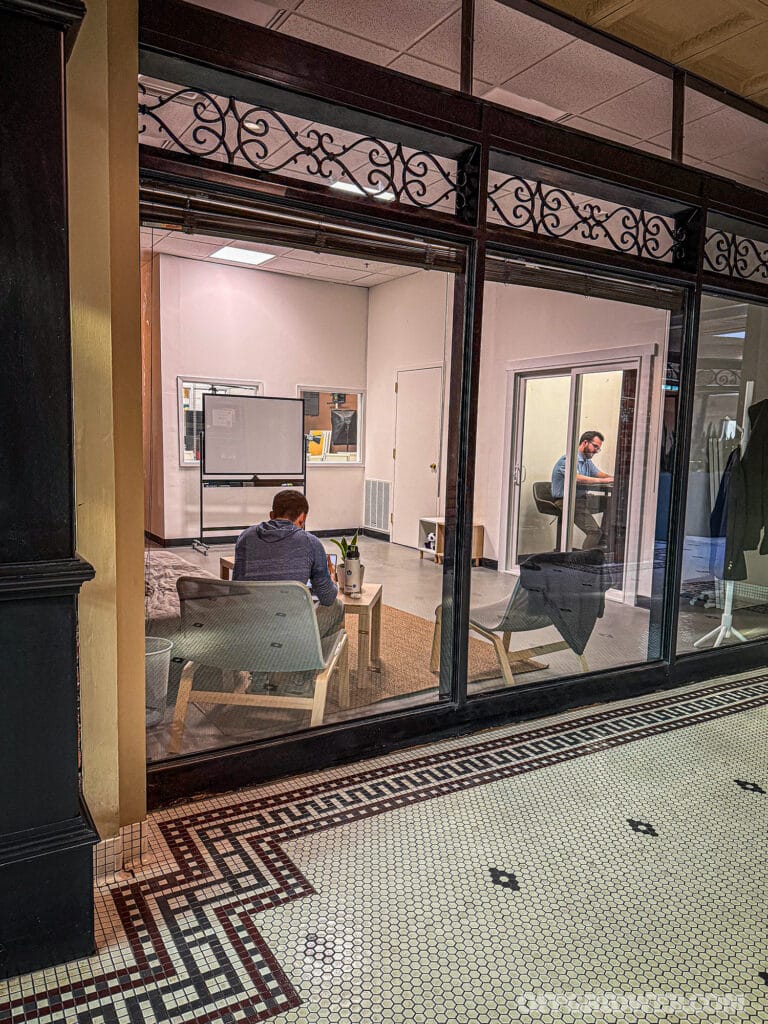
Glass supplies a way of social distance however doesn’t forestall others from observing your actions and conduct.
Consideration and Cognitive Load
Consideration is the method of directing focus towards related stimuli whereas filtering out distractions, an important element of efficient situational consciousness. Managing cognitive load — the psychological effort required to course of info — is vital to staying alert and responsive in dynamic conditions.
Selective consideration performs a significant function on this course of. By concentrating on essential components akin to exits, escape routes, or environmental anomalies, you’ll be able to prioritize what actually issues. Multitasking in high-stakes eventualities, nonetheless, can dilute consciousness and needs to be averted.
To deal with cognitive load effectively, specialists make use of strategies like “chunking” info and utilizing mnemonics to retain key particulars. For example, in a crowded mall, you would possibly mentally affiliate exits with landmarks like a bookstore or a meals court docket, making them simpler to recall in an emergency.
Commentary strategies are equally necessary. Alternating your remark strategies helps fight fatigue and forestall change blindness — the shortcoming to note delicate however important modifications in your environment. By periodically rotating your visual field and utilizing a mixture of the bare eye and optical gadgets, akin to binoculars throughout a wilderness hunt, you’ll be able to achieve recent views and keep away from turning into complacent.
One other superior ability includes mastering the transition between targeted and comfortable imaginative and prescient. Targeted imaginative and prescient permits for intense focus on particular particulars, akin to recognizing a hid firearm or figuring out the precise location of an anomaly. This precision is significant in high-stakes eventualities. In distinction, comfortable imaginative and prescient expands your consciousness, enabling you to scan bigger areas with out fixating on minute particulars. This relaxed-but-alert state is particularly helpful for observing crowds or huge landscapes, akin to a hillside within the wilderness, the place detecting motion is usually extra essential than figuring out advantageous particulars.
Practising the seamless shift between targeted and comfortable imaginative and prescient enhances your capability to evaluate and reply to various environments successfully. This ability, typically emphasised in wilderness survival and consciousness coaching, sharpens your total situational consciousness and prepares you for challenges that demand each precision and adaptableness.
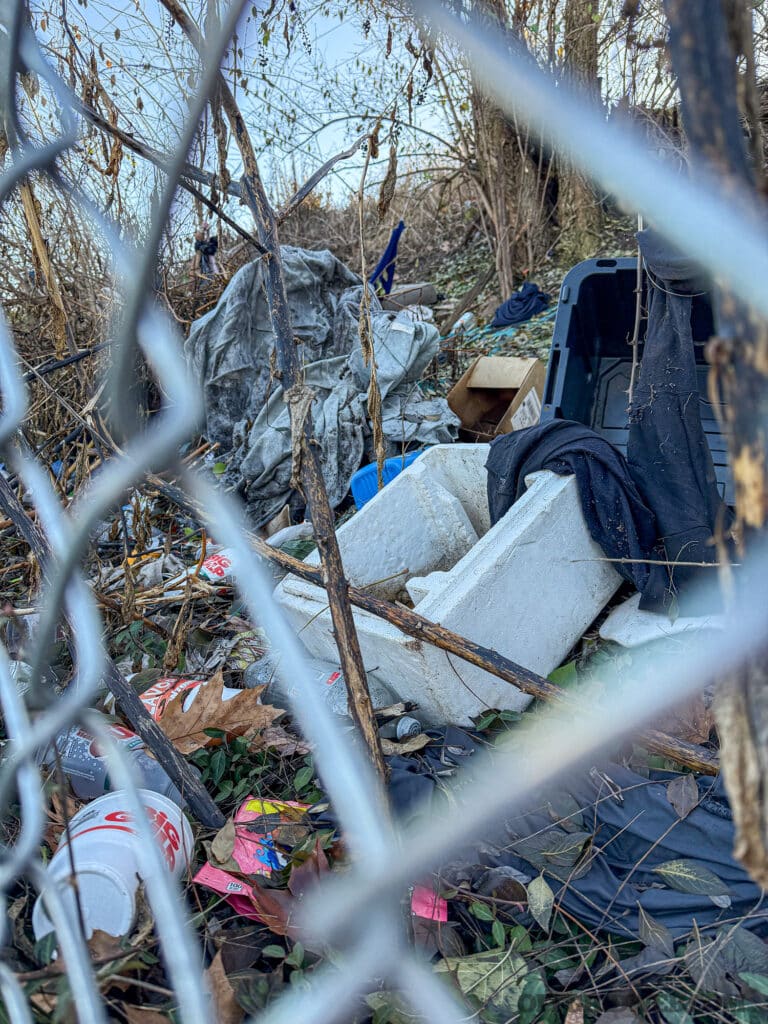
An abundance of trash in an space could be a signal of vagrant exercise. Keep alert when navigating such areas.
Creating an Operational Narrative
One of the crucial efficient strategies for understanding and navigating an surroundings is to craft a psychological story of the house. By framing observations inside a structured narrative, you’ll be able to achieve deeper insights into the dynamics at play and anticipate potential modifications. This strategy blends cautious remark with creativeness, enabling you to mentally rehearse eventualities and improve your preparedness.
Start by figuring out the “characters” in your surroundings. Who’re the people current, and what roles would possibly they play? Observing particulars akin to physique language, apparel, and interpersonal interactions can reveal worthwhile clues about their intentions and relationships. This consciousness can assist you higher assess the social or situational context and establish potential dangers or allies.
Subsequent, take time to think about completely different views. What would possibly others be pondering or feeling? How might your personal biases coloration your interpretation? By making an attempt to see the scenario by way of their eyes, you’ll be able to develop a extra nuanced understanding of their motivations and emotional states. This train not solely sharpens your observational abilities but in addition helps scale back blind spots brought on by private assumptions.
Recognizing precipitating occasions is one other essential factor of situational storytelling. These are the actions or patterns that may result in important outcomes. For instance, noticing somebody lingering close to an exit or displaying heightened anxiousness might point out a growing subject. These “set off occasions” typically function early warning indicators, offering you with a possibility to behave proactively.
Lastly, anticipate potential programs of motion by visualizing eventualities step-by-step. What if a fireplace alarm all of a sudden goes off? How would you reply if somebody grew to become aggressive? Mentally rehearsing these conditions lets you map out potential actions, reactions, and counteractions. This preparation reduces hesitation throughout essential moments, enabling you to reply decisively and successfully when confronted with surprising challenges.
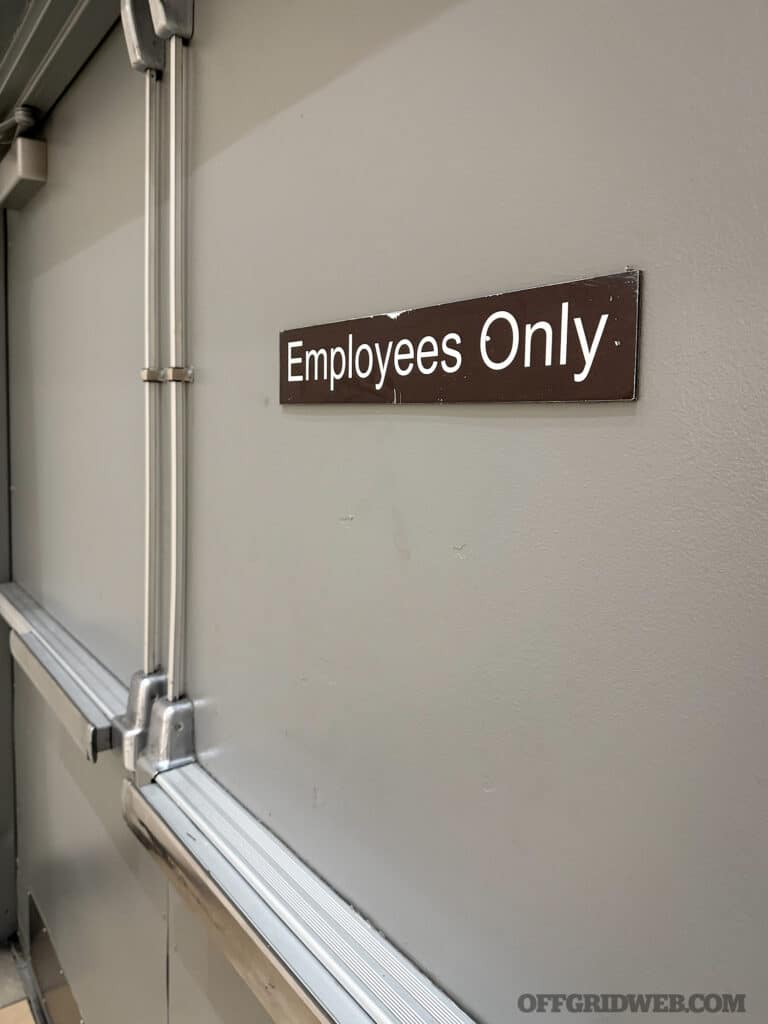
Anchor factors, akin to “Workers Solely” areas, would possibly function a refuge or escape route throughout essential conditions like an energetic shooter occasion.
Sensible Purposes
Integrating situational consciousness into on a regular basis life transforms summary ideas into sensible abilities, enhancing each private security and confidence in navigating numerous environments. By making use of these ideas, you’ll be able to proactively deal with potential dangers and keep management in various conditions.
Begin by understanding the excellence between ordinary areas and anchor factors. Public areas are usually open and accessible, whereas anchor factors — akin to restricted areas or employee-only zones — are sometimes off-limits. Should you inadvertently enter an anchor level, exit rapidly and with out confrontation. Recognizing these boundaries not solely prevents pointless conflicts but in addition helps you keep situational management. Take into account the likelihood that somebody may be monitoring your actions. Mirror on the place and the way you or your loved ones could possibly be simply accessed and regulate your conduct accordingly.
Be aware of chokepoints and deadly funnels — locations the place motion is of course funneled, like slim hallways or doorways. These areas enhance vulnerability by limiting escape routes. Figuring out alternate exits upfront can assist you keep away from these high-risk zones and scale back potential risks throughout emergencies.
Studying conduct is one other essential ability. Observing delicate cues in physique language, akin to nervous actions, closed-off postures, or micro-expressions, can present early warnings about potential aggression or unease in others. This consciousness lets you assess threats and reply proactively earlier than conditions escalate.
Environmental clues additionally play a big function in situational consciousness. Indicators of gang exercise, like particular graffiti or colours, can point out areas to keep away from. Equally, pay attention to the general situation of your environment. Is it orderly and maintained or chaotic and uncared for? These particulars can assist you make knowledgeable choices about the place to go and what actions to take.
Car consciousness is equally necessary. When driving, keep a secure distance from different automobiles at stoplights to make sure you have room to maneuver if obligatory. Keep away from displaying logos or objects in your automotive that would appeal to thieves. Moreover, familiarize your self with exits in parking garages or different confined areas to make sure you have a fast escape route if wanted.
Take note of mild and shadow dynamics as properly. Modifications in lighting can considerably impression visibility, both revealing or concealing potential threats. For instance, shifting mild can expose people or hazards that may in any other case stay hidden. All the time carry a flashlight to light up areas that may in any other case be missed.
Situational mapping enhances your readiness to reply to dynamic environments. Create a psychological map of your environment, noting exits, escape routes, and potential hazards. Usually replace this map as you progress by way of areas, permitting you to adapt rapidly to modifications.
Auditory consciousness enhances your visible observations. Sudden shifts in sound ranges, like surprising silence or new noises, can sign environmental modifications or hidden actions. Listening fastidiously lets you detect potential threats that may not but be seen.
Crowd dynamics provide one other layer of perception. Observing the circulation and conduct of crowds can reveal rising threats or alternatives. A sudden surge or dispersion of individuals, for instance, would possibly point out a risky scenario requiring instant consideration. Understanding these patterns helps you navigate safely and successfully by way of public areas.

Keep away from offering strangers with dialog starters. Car stickers can reveal private info that unhealthy actors might use to seem acquainted.
Constructing Situational Consciousness Expertise
Growing the flexibility to learn locations successfully requires constant apply and an energetic engagement along with your environment. By incorporating quite a lot of strategies, you’ll be able to refine this essential ability and make situational consciousness an integral a part of your each day life.
One efficient methodology is working towards remark drills. Spend time in public areas observing folks’s conduct, interactions, and actions. Search for patterns and anomalies, akin to somebody standing nonetheless in a busy space or showing overly nervous or disengaged. Common apply hones your capability to identify delicate cues and interpret their significance, making it simpler to establish potential dangers or outliers.
Familiarizing your self with the format of continuously visited areas is one other worthwhile step. Research the design of your office, native shops, or favourite parks. Be aware of exits, chokepoints, and pure strains of drift the place folks are likely to congregate or transfer. Observe navigating these areas underneath completely different eventualities, imagining the way you would possibly depart rapidly throughout an emergency or the place you might search shelter if wanted. This preparation helps construct muscle reminiscence and confidence in your capability to reply successfully.
Simulation coaching additional enhances situational readiness. Mentally rehearse eventualities you would possibly encounter, akin to coping with an aggressive stranger in a car parking zone or responding to a fireplace alarm in a crowded constructing. Visualizing these conditions situations your thoughts and physique for fast, decisive motion, decreasing hesitation throughout real-life incidents.
Function-playing workout routines present a further layer of preparation. Have interaction with buddies or household in simulated eventualities, working towards abilities like figuring out suspicious conduct or planning escape routes. These hands-on experiences reinforce your coaching and enhance confidence in your capability to behave underneath stress.
Common environmental scanning is one other behavior value cultivating. Prepare your self to note modifications in your environment, akin to shifting mild, new objects, or uncommon sounds. Incorporating this behavior into your each day routine retains your consciousness sharp, even in acquainted environments.
Lastly, mindfulness practices can considerably improve your situational consciousness. Strategies that concentrate on staying current within the second enhance your capability to course of sensory info, decrease distractions, and make extra correct observations. Being absolutely engaged along with your environment ensures you’ll be able to adapt rapidly to modifications.
Conclusion
The power to learn locations and assess environments isn’t just a ability for professionals — it’s a vital software for everybody. You possibly can navigate the world extra safely and confidently by enhancing your situational consciousness, understanding geographics and atmospherics, and creating operational narratives. Bear in mind, proactively recognizing and avoiding potential risks is much better than reacting to them after they happen. Observe these strategies often, and also you’ll end up shifting by way of life with heightened consciousness and management.

About The Writer
Craig Caudill is the director of Nature Reliance Faculty, the place he teaches outside security, survival, and monitoring abilities to people and organizations. An completed creator of a number of books on backcountry abilities, Caudill can be a sought-after marketing consultant for nationwide tv and media, together with reveals like Bare and Afraid and America’s Most Wished. With a long time of expertise in wilderness training and situational consciousness, Caudill combines sensible experience with a ardour for serving to others develop resilience and self-reliance. Study extra at www.naturereliance.org.
Learn Extra From Problem 66
Don’t miss important survival insights—join Recoil Offgrid’s free publication right this moment!
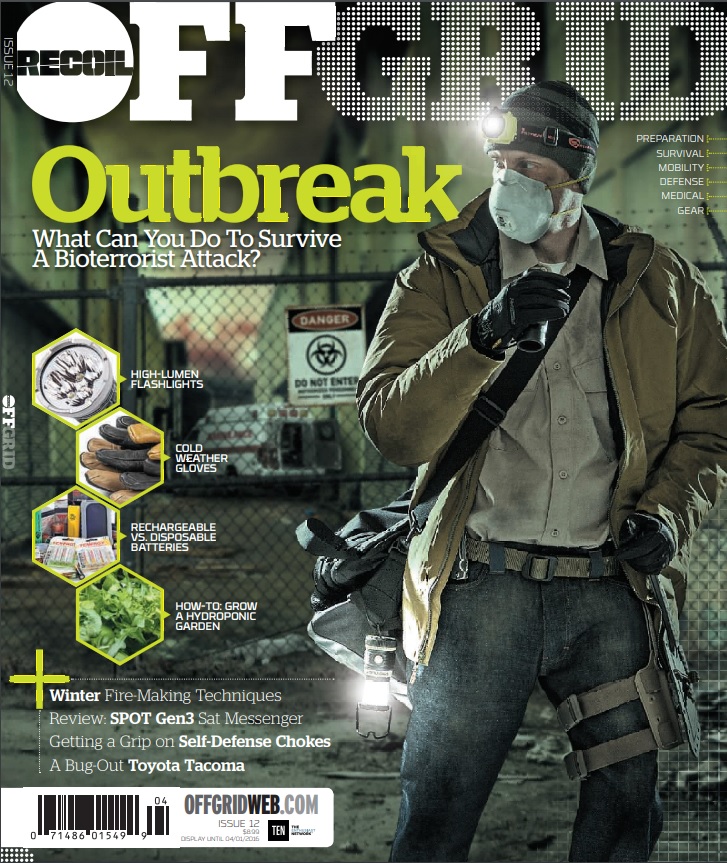 STAY SAFE: Obtain a Free copy of the OFFGRID Outbreak Problem
STAY SAFE: Obtain a Free copy of the OFFGRID Outbreak Problem
In subject 12, Offgrid Journal took a tough take a look at what you need to be conscious of within the occasion of a viral outbreak. We’re now providing a free digital copy of the OffGrid Outbreak subject if you subscribe to the OffGrid e mail publication. Join and get your free digital copy


